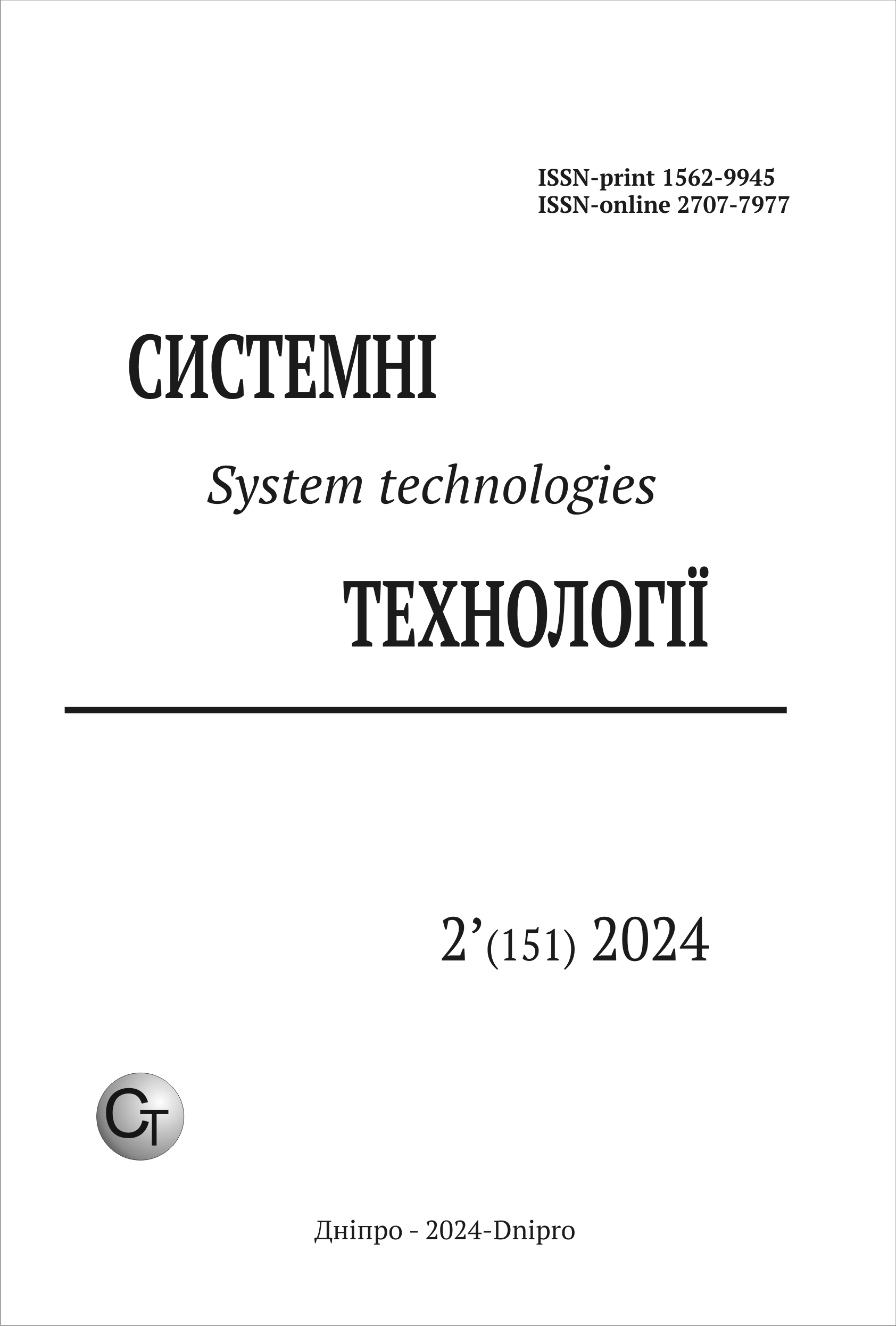АНАЛІЗ ВПЛИВУ ШВИДКОСТІ ОХОЛОДЖЕННЯ НА ТВЕРДІСТЬ СТАЛЕЙ ДЛЯ ЗАЛІЗНИЧНИХ РЕЙОК ПЕРЛІТНОГО ТА БЕЙНІТНОГО КЛАСУ
DOI:
https://doi.org/10.34185/1562-9945-2-151-2024-09Ключові слова:
залізнична рейка, перліт, бейніт, зносостійкість, коліяАнотація
Процес експлуатації транспортних засобів визначає взаємодію колеса і рейки. Від параметрів цього процесу багато в чому залежать безпека руху та основні техніко-економічні показники господарств колії та рухомого складу. Результатом є вплив, що виникає від тертя кочення і особливо від тертя ковзання колеса по рейці при гальмуванні, відносно цих змін відбувається істотне зростання інтенсивності зношу-вання коліс рухомого складу, яке, в свою чергу може призвести до катастрофічних ре-зультатів для локомотивного господарства. Також в процесі експлуатації рейки в бі-льшості випадків утворюються дефекти, що мають характер складнонавантаженого стану: її головка піддається зношуванню, зминанню, розтріскуванню і викришуванню, в металі можуть розвиватися контактно-втомні пошкодження. В перлітних сталях зносостійкість забезпечується за рахунок високого вмісту вуглецю і малої відстані між пластинами перліту (що досягається за рахунок процесу загартування головки рейки), які обидва підвищують твердість. Виходячи з досліджень останніх років відо-мо, що міцність перлітних рейкових сталей досягла межі. Крім того, подальше збіль-шення вмісту вуглецю вплине на ударну в'язкість та зварюваність матеріалів рейок. Отже, існує гостра потреба в інших альтернативних матеріалах. Бейнітна сталь, що забезпечує як високу міцність, так і відмінну пластичність, вважається одним з най-більш перспективних напрямків. Встановлено, що дослідна сталь при швидкості охо-лодження від 0,2˚С/с до 0,52˚С/с має бейнітну структуру з невеликою кількістю мар-тенситу та аустеніту залишкового; при збільшені швидкості охолодження від 1,3˚С/с - структуру мартенситу з аустенітом залишковим.
Посилання
R. Harder. Creep Force – Creepage and Frictional Work Behaviour in Non-Hertzian Counter formal Rail/Wheel Contacts. Proceedings of IHHA'99 STS-Conference on Wheel/Rail Interface. 1999. V. 1. p. 207 – 214.
B. Paul. J. Hashemi. User's Manual for Program CONTACT. Technical Report No. 4. FRA/ORD-78/27/PB286097. NTIS. Springfield. VA. Sept. 1977.
Bolshakov V.I.. Dolzhenkov I.E.. Zajcev A.V. Oborudovanie termicheskih cehov. tehnologii termicheskoj i kombinirovannoj obrabotki metalloprodukcii. Izd.2-e. Dnepropetrovsk. RIA Dnepr-VAL. 2010 g. -619s
H. de Boer et al.. "Naturally Hard Bainitic Rails with High Tensile Strength." Stahl und Eisen. Vol. 115. No. 2.1995. pp. 93-98.
N. Jin. "Mechanical Properties and Wear Performance of Bainitic Steels." Ph.D. Thesis. Oregon Graduate Institute. Portland. OR. 1995.
N. Jin and P. Clayton. "Effect of Microstructure on Rolling/Sliding Wear of Low Carbon Bainitic Steels." Wear. Vol. 202.1997. pp. 202-207
W. Heller and R. Schweitzer. "Hardness. Microstructure and Wear Behavior of Steel Rails." 2nd. International Heavy Haul Railway Conference. Colorado Springs. Colorado. 1982. pp. 282-286.
Rozrobka stalej dlya metaloprodukciyi zaliznichnogo priznachennya. Babachenko O. I.. Kononenko G. A.. Roslik O.V.. Majstrenko K.M.. Podolskij R.V. Dnipro. «Domi-nanta-print». .2021. 298 stor.
Babachenko O. I.. Kononenko G. A.. Podolskij R. V.. Safronova O. A. Stal dlya zal-iznichnih rejok z polipshenimi ekspluatacijnimi vlastivostyami. Fiziko-himichna mehanika materialiv. 56(6). 2020. s 82-87.
S. Sharma. S. Sangal. K. Mondal. Wear behaviour of bainitic rail and wheel steels. Mater. Sci. Technol. 32 (4) (2016) 266–274.
P. Pointner. High strength rail steels-The importance of material properties in contact mechanics problems. Wear 265 (2008) 1373–1379.
Bhadeshia. H. K. D. H.. ``Hyperbolic Tangents and Alloys of Iron". Materials World. 7 . pp. 643-645. 1996.
Merkulov, O., Podolskyi, R., Kononenko, A. et al. Development of Promising Steels for Railway Rails of a New Generation Using Modeling of Phase-Structural Transformations. Trans Indian Inst Met (2024). https://doi.org/10.1007/s12666-024-03265-4.
Takahashi. M. and Bhadeshia. H. K. D. H.. ``A Model for the Transition from Up-per to Lower Bainite. Materials Science and Technology. 6. pp. 592-603. 1990.
J.R. Yang. H.K.D.H. Bhadeshia Advances in Welding Science and Technology ed. S. David. ASM. Metals Park. ohio. USA (1986). p. 187-191.
R.A. Ricks. P.R. Howell. G.S. Barrite International Conference on Solid-Solid Phase Transformation. eds. H.I. Aaronson et.al.. TMS-AIME. Warrendale. PA. USA. 1981. p. 463-468.
Podolskyi R. V. Rozrobka himichnogo skladu ta rezhimiv termichnoyi obrobki visokomicnih rejok stalej perlitnogo klasu : dis. Dokt. filosof. : 132-Materialoznavstvo – Dnipro, 2023. – 181 s.
Завантаження
Опубліковано
Номер
Розділ
Ліцензія
Авторське право (c) 2024 Системні технології

Ця робота ліцензується відповідно до ліцензії Creative Commons Attribution 4.0 International License.















